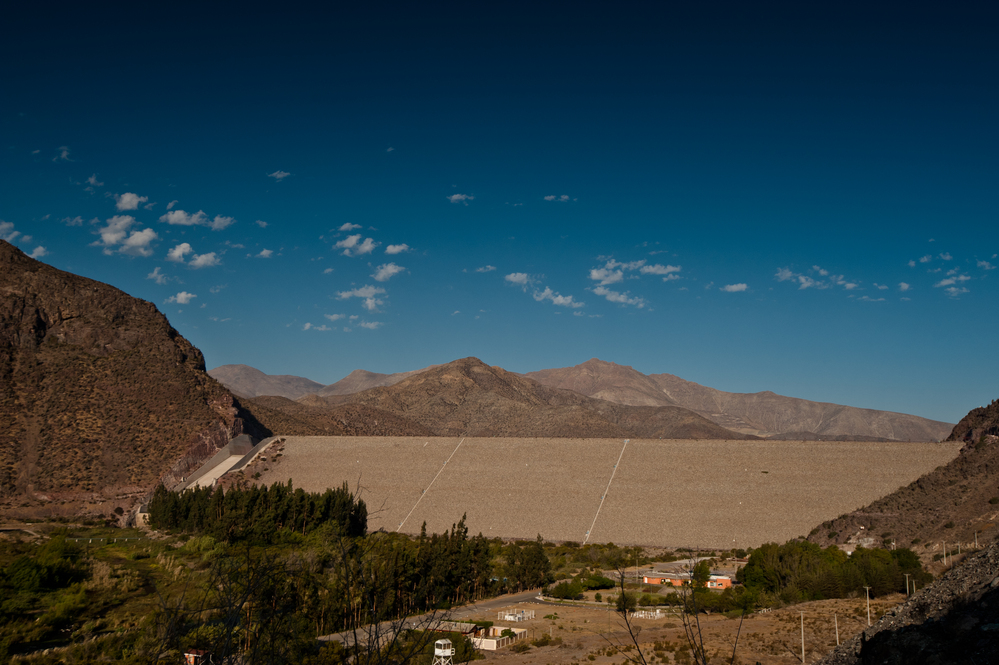
With modern infrastructure, scientific research and good agricultural practices, institutions and researchers are fighting soil degradation and the water crisis in the Coquimbo region in order to halt its advance.
Desertification and drought are one of the most urgent environmental challenges in times of Climate Change. As of today, it is considered that 40% of the land surface is degraded . In Chile, according to the National Forestry Corporation (CONAF), 23% of the national territory is at high risk of desertification . In addition, the country has been going through a water crisis for more than a decade. Although the regions of Maule, Bío-Bío and Coquimbo present these processes, studies and researchers converge in the fact that the latter region is the most affected.
"The Coquimbo region has a greater desertification fragility, it is a gradient, there is a very big difference between the cactus that can be seen in Coquimbo and the trees that form forests in Choapa. We are at the limit of desertification and we can study that change" explains Carlos Olavarría, executive director of the Center for Advanced Studies in Arid Zones (CEAZA). This center is strategically located in the area bordering the Atacama Desert, known for being the driest desert in the world.
But what is meant by the concepts of desertification and drought?
Desertification is the gradual change of the earth's surface from a fertile to a more desert-like state, caused by climatic variations and human activity. Deforestation, lack of water, overexploitation of groundwater, overgrazing and poor irrigation practices degrade the soil.
Drought occurs when low rainfall lowers water levels - far below what is appropriate - in a given geographic area, affecting all species that grow and develop in this area.
What is Chile doing to mitigate drought and desertification?
Desalination system in the Coquimbo Region
This year the government, through the Ministry of Public Works, announced for the second half of the year the tender for a multipurpose desalination plant, which will benefit half a million people in La Serena, Coquimbo and Ovalle, will have a capacity of 1,200 liters per second and involves an investment of US$300 million.
After a swift and unanimous approval in December 2023, a new law now empowers the MOP to study, develop, build and manage multipurpose water infrastructure, including desalination plants for human consumption.

This is the first stage of a desalination system in the Coquimbo region, where the installation of the next three desalination plants will provide a safe source of water for human consumption for the Rural Sanitation Services (RAS) in the provinces of Limarí, Choapa and Quilimarí.
Study of glaciers, impact of desalination plants and groundwater mapping
Through funds from the National Agency for Research and Development (ANID), which depends on the Ministry of Science, high standard research is financed in different centers of the country. At CEAZA they study glaciers to learn about the contribution and reserves in the mountainous sectors of the region.
In addition, they are carrying out high-resolution mapping of the state of the aquifers in the province of Limarí, where there is greater agricultural development. "This map will allow users and decision makers to plan wells in the right places and at the right depth," says Carlos Olavarría, executive director of the center.
On the other hand, they are investigating the effect of desalination plants on the marine environment. "We established the most and least suitable areas for the installation of these plants, considering the oceanographic conditions of brine dispersion. We even analyzed in the laboratory the exposure of three organisms that are marketed as locos, machas and algae. It is not lethal, but there is an impact, that has to be evaluated", Olavarría concludes.
Role of agriculture in mitigating desertification
Although traditional agriculture has contributed to desertification, due to erosive processes caused by irrigation with excessive water flow, today this situation can be corrected through localized irrigation. To a greater extent in the Norte Chico, where there are 2.2 million hectares with severe desertification.
According to Claudio Balbontín, irrigation researcher and Regional Director of INIA-Intihuasi (National Agricultural Research Institute) in this area, "the National Irrigation Commission and INDAP have promoted this technification and INIA has worked on technology transfer so that farmers adopt the use of drip irrigation correctly".

In addition, "this institute, together with INDAP, has the Transition to Sustainable Agriculture - TAS project, which teaches crop and soil management," adds the director of the Regional INIA. "The emphasis is on good agricultural practices, where it is recommended to learn to coexist with weeds and microorganisms that contribute to life, organic matter, nutrients and most importantly greater moisture retention, so important in this area with serious limitations in water availability".




